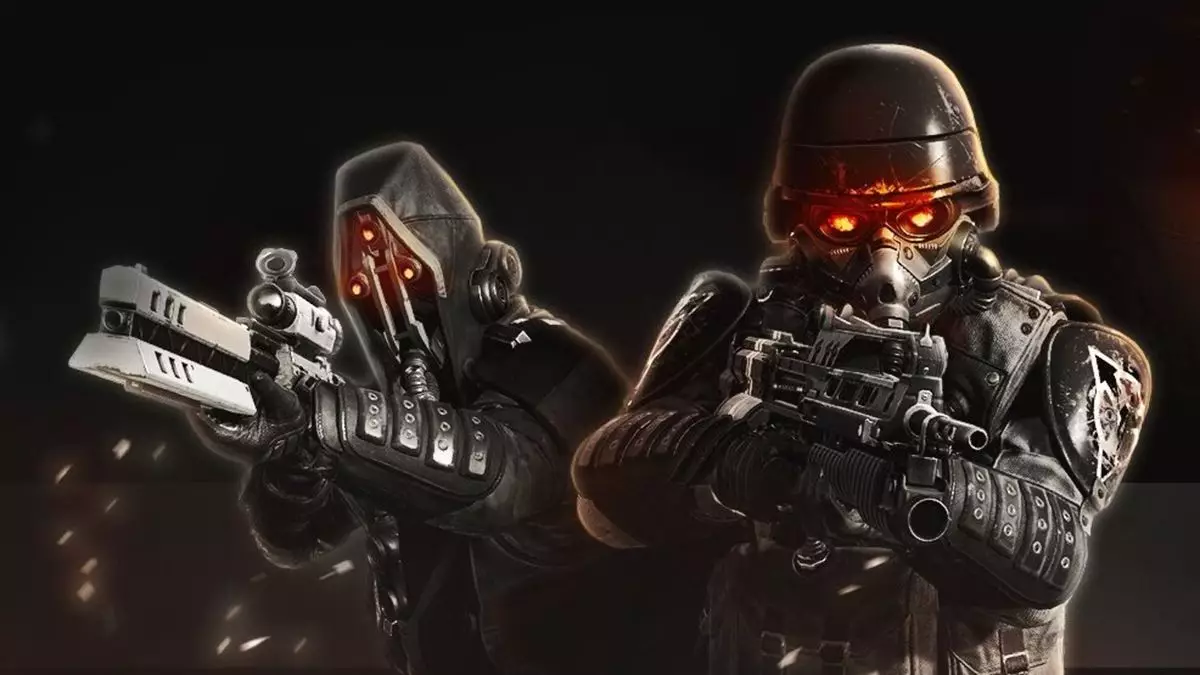Recently, the gaming community surrounding Helldivers 2 has been set abuzz, not due to exciting new gameplay features, but rather because of the exorbitant pricing tied to its first major crossover with Killzone. This collaboration highlights a significant trend within the gaming industry, particularly in live-service titles, where the allure of exclusive content often comes at a steep price. While the introduction of premium cosmetics inspired by iconic titles is not uncommon, the hefty price tag attached to Helldivers 2’s Killzone skins has sparked vigorous debate among players and fans alike.
As gamers expect engaging content that will enhance their gameplay experience, many are being met with disappointment as these new skins fall into a “premium” pricing tier. The contentious crossover includes an assortment of items themed around the Helghast faction from Killzone, featuring their signature gear, weapons, and cosmetic enhancements. Yet, this excitement has swiftly turned to outrage due to the high costs associated with these items.
When examining the costs, the figures are certainly eye-catching—offering a full Killzone crossover bundle for approximately $20, which is about half the price of the Helldivers 2 game itself. Individual items, like the StA-52 Assault Rifle priced around $6 to $7, further contribute to the perception that players are being asked to pay far more than what is fair for cosmetic upgrades. Such pricing strategies often come under scrutiny, especially when players perceive no tangible enhancements to their gameplay experience.
Players have expressed their dissatisfaction across various platforms, leading to increased scrutiny on Arrowhead Game Studios, the developers behind Helldivers 2. The community’s vocal response to the crossover pricing illustrates a wider concern that gaming companies might prioritize monetization over the value and enjoyment perceived by their audience. As Arrowhead blunders through these waters, understanding the right balance of cost and community satisfaction has emerged as a pressing challenge.
Management’s Response
In response to the uproar from the community, Arrowhead’s CEO Shams Jorjani took to Discord to address these concerns, albeit, his initial comments didn’t quite resonate well with players. He acknowledged the pricing missteps openly and committed to aligning future content prices with community desires. His engagement signaled the studio’s recognition of their audience’s influence on both current decisions and future ones.
Jorjani’s comments on this issue sparked a much-needed dialogue, indicating that Arrowhead is “looking at data” to gauge player interests and feedback. While he could not provide specifics, his message implied a willingness to learn from the backlash to fine-tune future offerings so they would better align with player expectations.
The Challenge of Live-Service Game Models
The situation encapsulates the complexities of managing live-service games—navigating the competing interests of profit generation and community satisfaction. It highlights a critical challenge for studios that, while needing to sustain and grow their operations financially, must also foster a positive relationship with their player base. Jorjani openly admitted that running a game of this scale posed difficulties that the company had never faced before, especially given their last major release was nearly a decade ago.
The abrupt realization of a pricing misalignment presents an opportunity for learning, as the studio can leverage player feedback to adjust their approach going forward. Further, Jorjani acknowledges the importance of finding a “sweet spot” where the pricing feels justifiable to players, which could encourage greater engagement and purchases.
Though the current crossover may not see any immediate alterations before its conclusion, Jorjani’s openness to feedback could influence future collaborations and cosmetic content. Arrowhead’s self-awareness is a key component in mitigating the potential fallout from community dissatisfaction, building a roadmap for constructive engagement moving forward.
Ultimately, the Helldivers 2-Killzone crossover scenario underlines a critical truth in gaming today: without listening to community sentiments and adapting to their needs, even the most promising collaborations can falter. The gaming industry is always evolving, and player expectations are shifting. As studios embrace these challenges and iterate upon community feedback, they will not only retain loyal players but can also thrive in an increasingly competitive marketplace.

